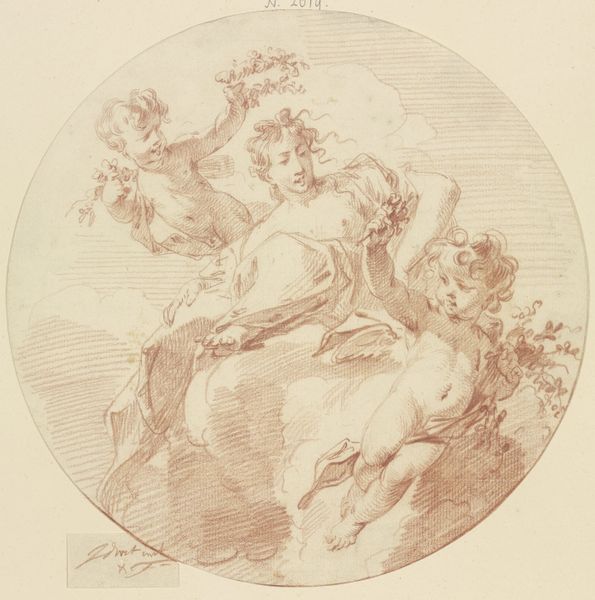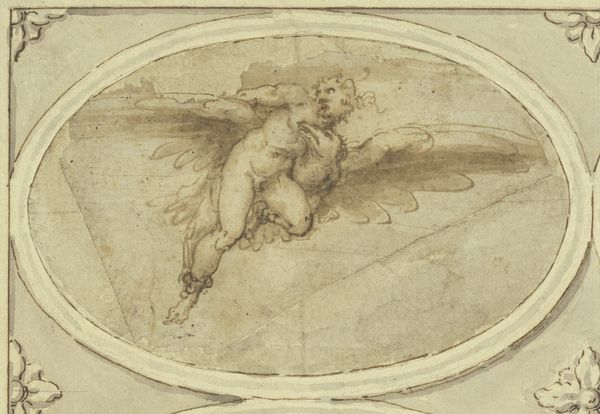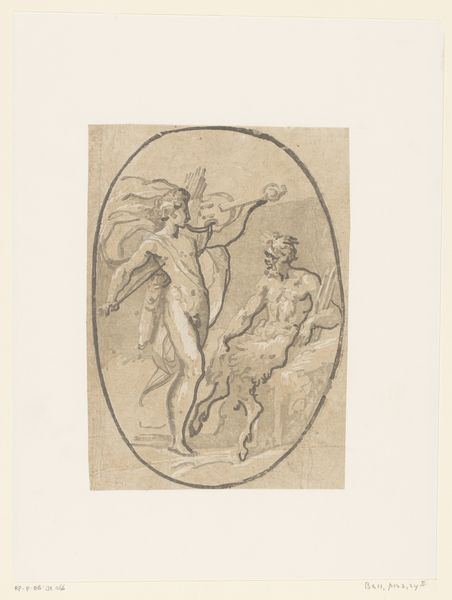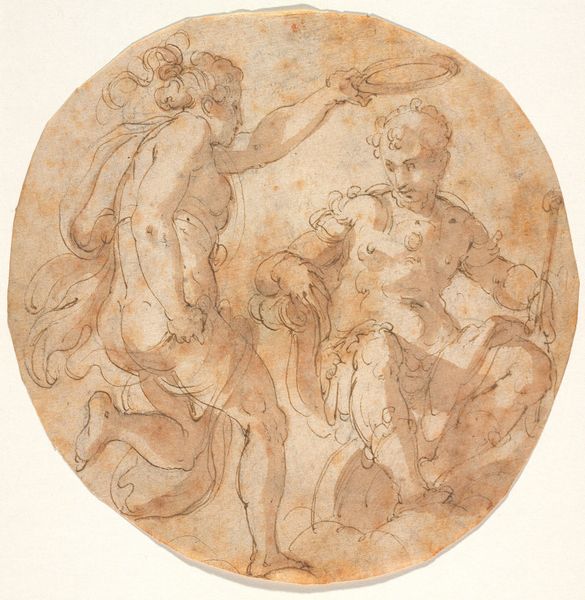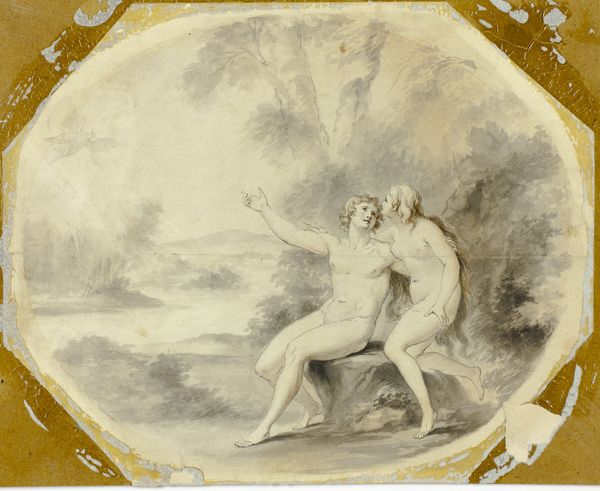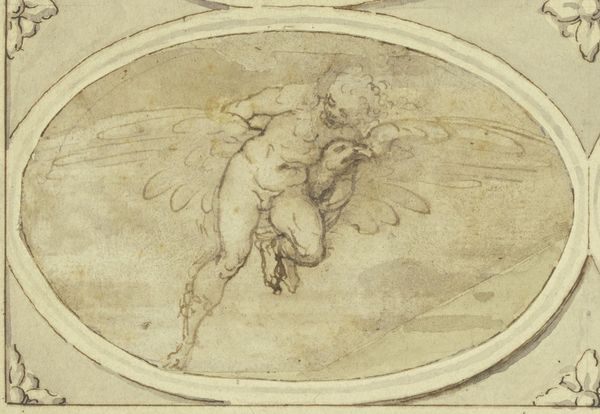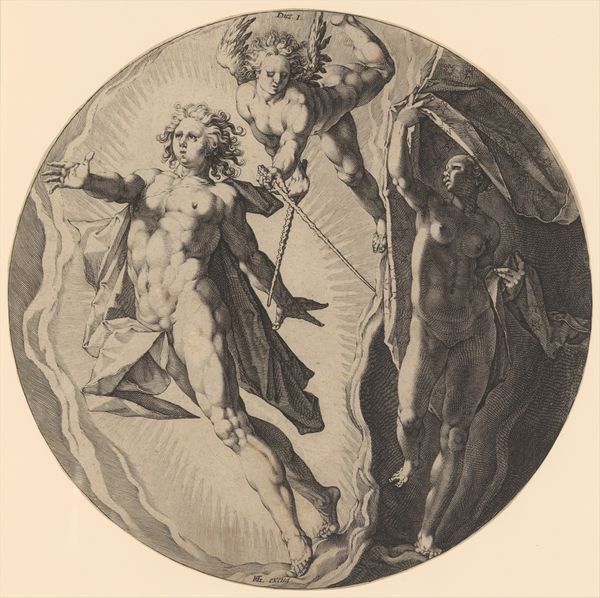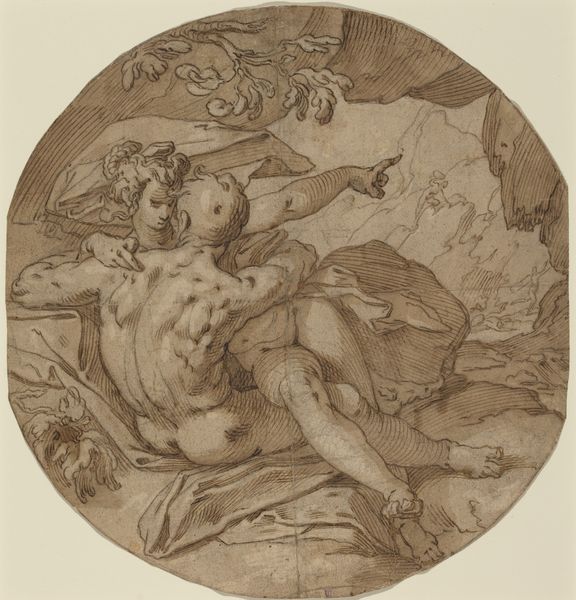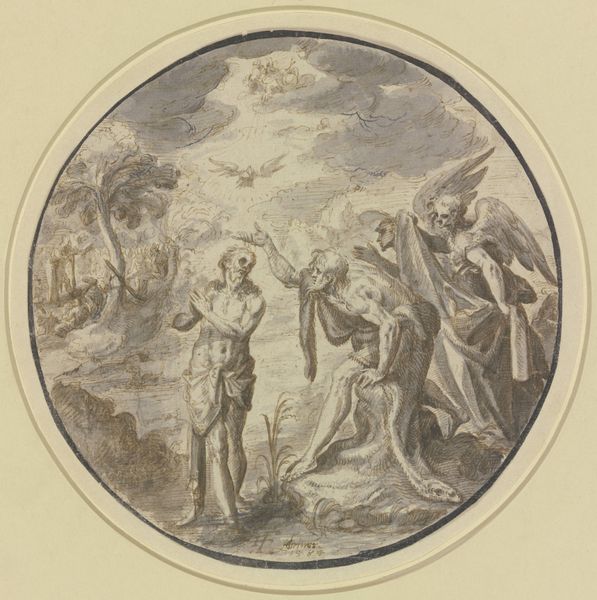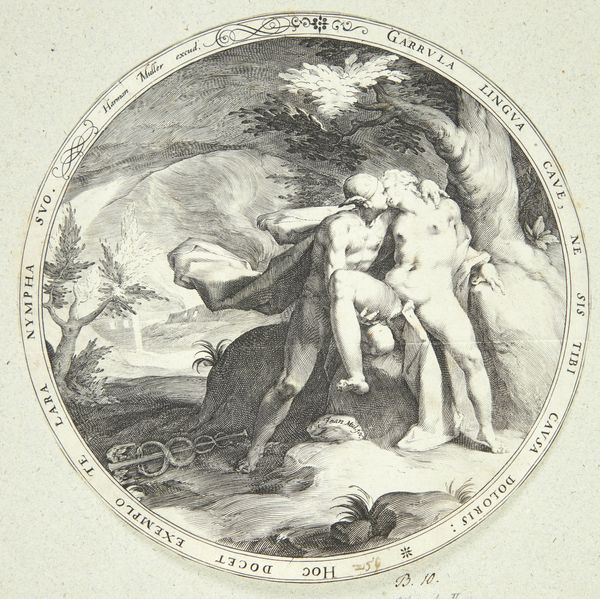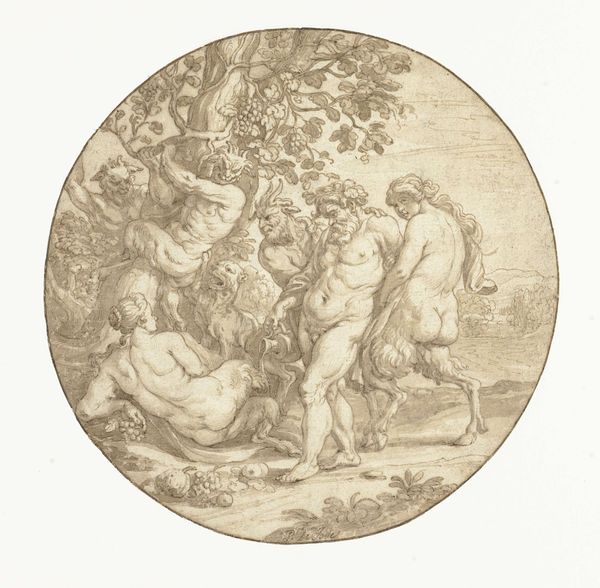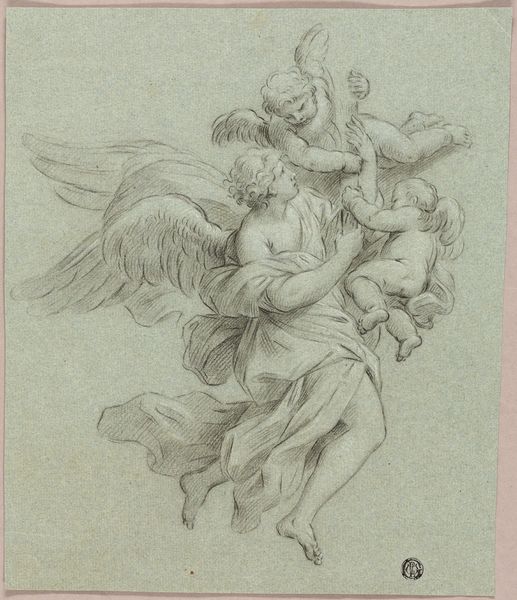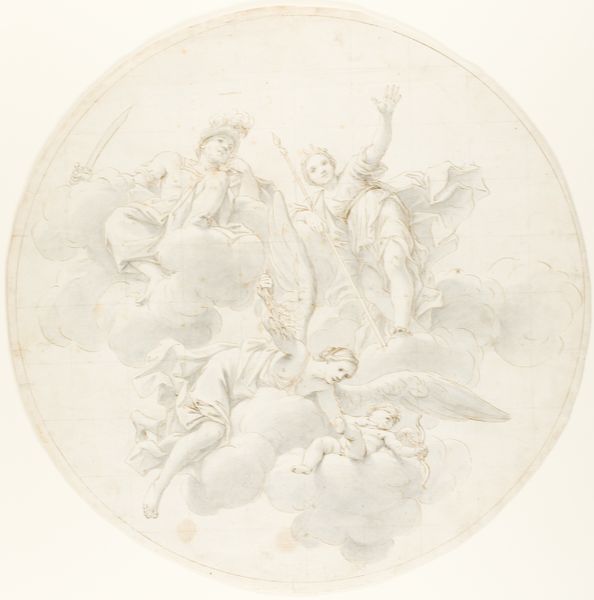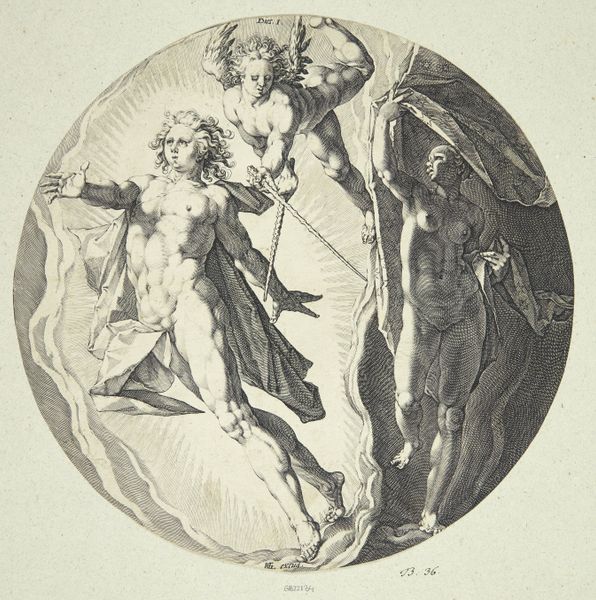
Wisdom and Truth Descend to Earth and the Twilight which Conceals Them Disperses as They Approach 1794
0:00
0:00
drawing, chalk
#
drawing
#
allegory
#
landscape
#
figuration
#
classicism
#
chalk
#
line
Copyright: Public Domain
Editor: This is Pierre-Paul Prud'hon’s 1794 drawing, "Wisdom and Truth Descend to Earth and the Twilight which Conceals Them Disperses as They Approach," rendered in chalk. I find the contrast between the ethereal figures and the shadowy twilight incredibly compelling. What symbols stand out to you in this piece? Curator: Immediately, I’m drawn to the allegorical representation of Wisdom and Truth. Note how Truth is often depicted as nude or partially veiled, a symbol of unveiling and revelation. The armor donned by Wisdom connects her to Athena, linking intellect with strategic insight. Consider how these figures together influence cultural memory, embodying the enlightenment’s central tenet of reason dispelling ignorance. What does their descent suggest to you? Editor: Perhaps their descent signifies making these virtues accessible. Was there a renewed emphasis on accessing wisdom and truth during this time? Curator: Absolutely. The late 18th century was steeped in revolution – societal and intellectual. Prud'hon’s image becomes a visual manifesto, declaring these virtues essential to progress. See how the dispersing twilight creates an optimistic tone; it’s more than a simple unveiling, it’s the promise of enlightenment overcoming historical obscurity. Is the coupling of Truth and Wisdom common? Editor: The pairing makes sense. Wisdom without truth feels misguided, and truth without wisdom feels… incomplete? Almost dangerous? I guess seeing it visualized gives me a better understanding of why they're always discussed together. Curator: Precisely. This intertwining emphasizes their symbiotic relationship, essential for a well-ordered society, a visual lesson deeply rooted in Enlightenment values and presented for posterity. What a great image to anchor these thoughts!
Comments
stadelmuseum almost 2 years ago
⋮
Pierre Paul Prud'hon makes use of his typical soft drawing techniques as he lets Minerva, the embodiment of Wisdom, and "naked" Truth hover together in the diffuse light of dawn in heaven's boundless expanse. The shadowy forms of Error and Iniquity flee into the darkness. Far away beneath these allegorical figures we can make out the terrestrial globe, on which in large letters the word 'FRANCE' can barely be discerned.A model for this couple, who seldom appear together iconographically, can be found in a 1715 engraving by L. Desplaces after A. Coypel. Here, Minerva has banished Error and Stupidity, so that Truth can reveal itself to humankind. Prud'hon found orientation for his drawing style in the 'sfumato' paintings of Leonardo and Correggio, whose works he saw in Paris, and also in Italy during his four-year scholarship in Rome (1784-1788). The artist uses black and white chalk to draw on blue laid paper, which corresponds to the twilight mood. He uses only a few lines to give the figures volume, and works instead with the effects produced by rubbed areas.As a characteristic example of French art at the turn of the eighteenth to the nineteenth century, Prud'hon's drawing mirrors the intellectual and political situation that marked the transition between the Revolution and the Empire. In order to give credible expression to an ideological statement, hope in the new Republic, in a picture that could be comprehended through the senses, he chose a classical subject which attracted considerable attention through its appealing adaptation of the design. With this suggestive imagery, 'La Sagesse et la Vérité' asserted itself as the opposite position to the rigorous, neoclassical doctrine of history painting as practised by artists like Jacques-Louis David and as a herald of French Romanticism. The drawing won awards in 1795 and Prud'hon was commissioned to execute a correspondingly decorative ceiling painting. Only marginally modified and ten times larger, the composition can be found today in the collection of the Musée du Louvre.
Join the conversation
Join millions of artists and users on Artera today and experience the ultimate creative platform.
